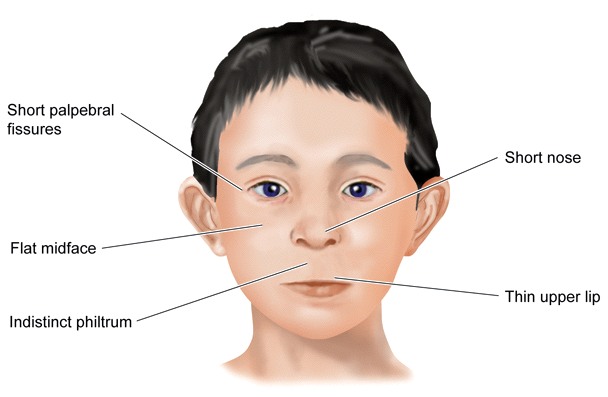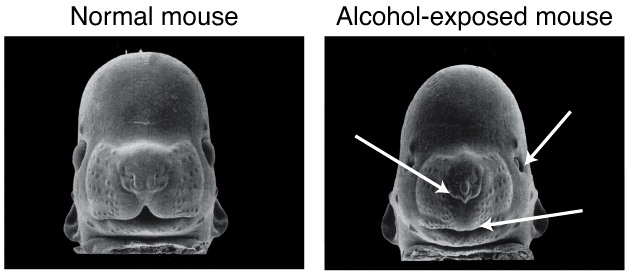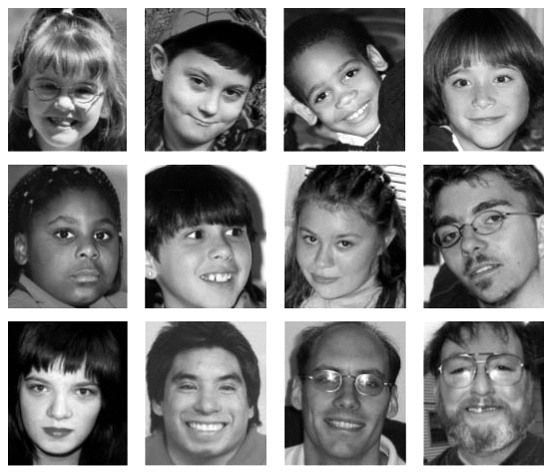Fetal Alcohol Spectrum Disorders (FASD) is a collection of developmental disorders affecting offspring that result from a woman drinking alcohol while she is pregnant. These disorders range from mild learning disabilities, to memory and attention deficits, to birth defects, to developmental delays, to serious behavior disorders, to sudden infant death syndrome. Drinking during pregnancy is the leading known cause of preventable birth defects in the Western world. To prevent these birth defects, the answer is simple. A woman should not drink alcohol while she is pregnant or even if she might become pregnant because…
- There is no known amount of alcohol that is safe during pregnancy.
- There is no known time during pregnancy that is safe to drink.
- And, there is no drink that contains alcohol that is safe.
Fetal Alcohol Spectrum Disorders are found across all social, economic, and racial groups. This spectrum of disorders includes the following:
- Fetal Alcohol Syndrome (FAS)
- Includes a pattern of facial abnormalities, growth retardation, insufficient brain growth, and distinct behavioral and cognitive (thinking abilities) abnormalities
- Alcohol-Related Birth Defects (ARBD)
- Includes minor facial abnormalities, structural or functional defects of organs (heart, skeleton, kidneys, eyes, or ears), and cognitive and behavioral abnormalities
- Alcohol-Related Neurodevelopmental Disorders (ARND)
- Consists of insufficient brain growth and distinct behavioral and cognitive abnormalities
Clearly, there is a vast spectrum of abnormalities associated with prenatal alcohol exposure. The range of these abnormalities is dependent on many factors, including the amount of alcohol consumed, the developmental stage of pregnancy when exposed, and the mothers’ pattern of drinking. Other factors that affect the severity of FASD include the nutritional status of the mother, any of drugs of abuse she may be taking during pregnancy, and her genetics.
Physical features associated with Fetal Alcohol Spectrum Disorders
The physical features resulting from exposure of the fetus to alcohol have been well-described. Several are quite typical of children with FAS and ARBD. These include, 1) a specific set of facial abnormalities (discussed below), 2) other organ structural defects, 3) prenatal and/or postnatal growth deficiency (below the 10th percentile for height or weight), and 4) a reduced head circumference. These features can occur in any combination in any child (although not all) exposed to alcohol prenatally. An example of the types of facial abnormalities is shown in Figure 5.1.
 Figure 5.1 Facial abnormalities associated with FAS and ARBD
Figure 5.1 Facial abnormalities associated with FAS and ARBD
Scientists have studied how alcohol causes developmental abnormalities in facial structure in animal models. For example, look at a picture of the faces of a normal mouse fetus and a mouse fetus that was exposed to a high dose of alcohol by its mother. The facial abnormalities are very similar to humans with FAS or ARBD!
 Figure 5.2 Facial abnormalities similar to the ones seen in humans are illustrated in fetal mice. The arrows highlight the small eyes, small nose, and long upper lip in an alcohol-exposed mouse. [Photos courtesy of Dr. Kathleen Sulik, University of North Carolina at Chapel Hill]
Figure 5.2 Facial abnormalities similar to the ones seen in humans are illustrated in fetal mice. The arrows highlight the small eyes, small nose, and long upper lip in an alcohol-exposed mouse. [Photos courtesy of Dr. Kathleen Sulik, University of North Carolina at Chapel Hill]
While very evident during childhood, many of these facial abnormalities tend to become less apparent with age, and adults with FAS may no longer show the classic facial characteristics. Some of the structural features can cause functional problems as well. For example, there can be reduced vision due to retinal malformations.
Not all people exposed to alcohol during pregnancy show the facial abnormalities. In the picture below, can you tell who has FASD?
 Figure 5.3 Which of these twelve people have FASD? [Image from FAS Family Resource Institute, www.fetalalcoholsyndrome.org]
Figure 5.3 Which of these twelve people have FASD? [Image from FAS Family Resource Institute, www.fetalalcoholsyndrome.org]
If you answered that all of them have FASD, you are right. Some people have very prominent facial abnormalities, and others look perfectly normal. However, they all still suffer the neurocognitive and behavioral abnormalities discussed below.
Not all physical abnormalities caused by prenatal alcohol can be seen with the “naked eye”. For example, some organs inside the body fail to develop normally. And our most precious organ, the brain, clearly shows structural abnormalities with the help of technologies such as magnetic resonance imaging (MRI).
Learn more about brain structural defects from prenatal alcohol
Learn more about how an MRI scan works
Neurocognitive and behavioral abnormalities associated with FASD
In addition to the structural problems, the effects of alcohol on a fetus can produce a host of other symptoms throughout childhood and adulthood, notably neurocognitive or behavioral problems and learning disabilities. While not all children exposed to alcohol prenatally exhibit these symptoms, the most common ones are listed below.
Neurocognitive and behavioral problems include:
- Average low IQ (can range from severe mental retardation to normal)
- Poor executive functioning
- Lack of social and communication skills
- Lack of appropriate initiative
- Poor judgment
- Failure to consider consequences of actions
- Poor concentration and attention
- Social withdrawal
- Poor impulse control
- Intermittent anxiety
- Stubbornness
Children who have FASD exhibit some combination of these cognitive and behavioral problems, regardless of when the mother drinks alcohol. Often, these children are mislabeled with other disorders such as Attention Deficit Hyperactivity Disorder (ADHD) because of some of the similarities in their behavioral problems.